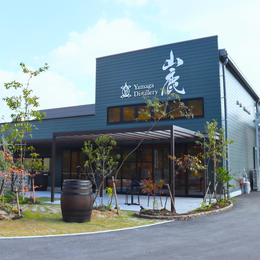9 Things to Know About Codorníu, Spain’s Oldest Winemaker & Inventor of Cava

If Champagne has Moët, then Cava has Codorníu.
Codorníu is an iconic Spanish bubbly brand you need to know. It's basically the great-grandparent of Cava: wildly historic, quietly innovative, and very much still in the game. Here’s everything you need to know about this 450-year-old sparkling wine giant — making over 30 million cases of Cava from wine caves that look like they jumped straight out of a movie set.
1. Codorníu is Spain's Oldest Winery, Pre-Dating Shakespeare and Even Champagne Houses like Moët & Chandon!

While most wine brands brag about a century or two of history, Codorníu casually traces its winemaking roots all the way back to 1551. To put that in perspective, this predates the century when electricity was invented, or the founding of champagne houses like Moët & Chandon.

That said, the family was initially only producing still wines in Catalonia, and it was only three centuries later that they pivoting to sparkling wine in the early 1870s.
2. They are the inventors of Cava, it's own category of sparkling wine made with the Champagne method, but with Catalan soul.

Codorníu is the inventor of Cava, which today is Spain's very own category of sparkling wine.
Josep Raventós Fatjó of the Codorníu-Raventós family dynasty was inspired to create Cava during a trip to Champagne, France in 1872, during which he saw the "méthode champenoise" in action. This is a traditional method used in Champagne production, whereby a mixture of yeast, wine, and sugar is aded to still wine and sealed into a bottle, thereby allowing secondary fermentation to occur in the bottle and create bubbles.
Once he returned home, He decided to recreate the style back home, swapping out usual Champagne grape varietals of Pinot Noir, Pinot Meunier, and Chardonnay with Spain’s own native grapes. That first bottle of Cava sparked an entire industry of its own — and turned Sant Sadurní d'Anoia (Codorníu’s hometown) into the undisputed Cava capital of the world.
3. Codorníu Still Crafts Its Cava Using the Traditional Method

While not all sparkling wine is made the same, Codorníu proudly sticks to the traditional method, the same labor-intensive technique used in Champagne that first inspired Josep Raventós to create Cava.
First, Codorníu's winemakers create a still wine base using a blend of native Spainish grapes such as Xarel·lo, Macabeo, and Parellada. The wine is then bottled together with some added yeast and sugar, which sparks off a secondary fermentation process inside the bottle itself, resulting in the formation of bubbles. The bottles are then aged on the lees (meaning the wine remained in contact with dead yeast cells, which are known as lees). This process helps round out the wine's texture and add a nutty flavour complexity.
Codorníu ages some of its Cavas far longer than the legal minimum, with their premium bottlings like Ars Collecta seeing extended time on the lees for a more refined expression.
4. Their Winery Is An Architectural Pilgrimage In And Of Itself

Once could say that visiting Codorníu isn’t just a tasting experience — it’s an architectural pilgrimage. In 1915, the winery was redesigned by Catalan Modernist architect Josep Puig i Cadafalch, who was a contemporary of Gaudí.
The result? A stunning complex of brick archways, stained-glass windows, and grand barrel-vaulted cellars buried beneath the vineyards. The buildings and cellars are even recognized as a National Artistic Historical Monument — and has become a must-visit location for tourists in the area, catering to over 100,000 visitors annually.
5. They Kept It In The Family For 18 Generations (Longer Than Some Royal Bloodlines)
Codorníu Winery stayed family-owned by the Codorníu-Raventós family dynasty for 18 generations - a jaw dropping feat in any industry, let alone wine.
It was first founded in 1551 by Jaume Codorníu. Later on, when the last Codorníu member to bear the name, Anna Codorníu, married Miquel Raventós, this led to the merging of two prominent wine making families and ensured that Codorníu would continue to operate under the watch of the Raventós. This would include Josep Raventós Fatjó, who if you'd recall, was the man who invented Cava and cemented the Codorníu name in Spanish wine history.

The centuries old family control did come to an end in 2018 however, when the Raventós family sold a majority stake to a US-based private equity firm called The Carlyle Group, in a deal that valued the historic Spanish winemaker at 390 million euros.
6. They Champion the Use of Local Grapes: Macabeo, Xarel·lo and Parellada (AKA, The Holy Trinity of Cava)

Codorníu has always been a strong proponent of the use of indigenous Spanish grapes in their sparkling wines. Since Joseph Raventós bottled the first ever bottle of cava, they are have using the holy trinity of grape varietals - Macabeo, Xarel·lo and Parellada - in their Cava blends.
The Macabeo is credited for imparting sweetness and perfume with notes of white fruit and acidity. Meanwhile, the Xarel·lo is favoured for giving body and structure. Finally, the Parellada adds finesse, giving their Cava delicate floral undertones.
The combination of these grapes is said to result in Cava's uniquely Mediterranean flavours — which tends to be lighter and more fruit-forward with citrus and pear notes compared to its Champagne cousins.
7. They Produce A Lot of Bubbles. We're talking over 45 million bottles a year.

Codorníu is a powerhouse of Cava production. Today, they’re one of the largest Cava producers in the world, with bottlings ranging from wallet-friendly party poppers to premium vintage expressions that can rival some Champagnes. Chances are, if you’ve had a Cava before, it might’ve been Codorníu.
8. Codorníu Was A Trialblazer Of Wine Advertising... All before Instagram

Long before the digital age, Codorníu recognized the power of brand building. The winery would commissioned custom-designed posters, build iconic logos, and were become early pioneers of wine tourism in Spain by opening their cellars to visitors.
One of the most notable collaborations they had was with Ramon Casas i Carbó, a prominent Catalan painter and illustrator associated with the Modernisme movement. Many of Codorníu's Modernisme advertising posters have since retained their charm, and become vintage collectors items today.
9. A Green, B Corp Cerified Giant in Spanish Wine

Codorníu's parent company, Raventós Codorníu, recently achieved an impressive B Corp status with the highest score of 88.5 points among any winery or beverage group in Spain.
A key focus of sustainability for the company has been its shift towards 100% organic grape production since 2023. That's exactly as what is sounds: Despite its scale of production, 100% of the grapes used by Codorníu are organically farmed and certified.
If Codorníu is the elegant elder statesman in a tailored suit, then Freixenet is the trend-savvy sibling in sleek black — both sparkling, both Spanish, but with different stories to tell. Read eight things you should know about Freixenet Cava here!







